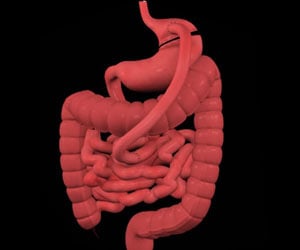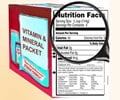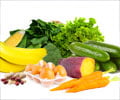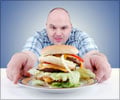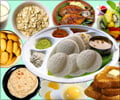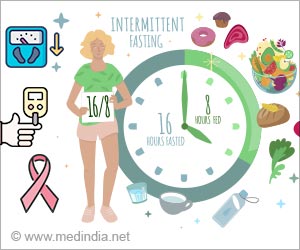Choosing healthy, lower-calorie-dense foods is more effective and more sustainable than just trying to resist large portions of higher calorie options.

‘Regular exercise is great for building muscle and losing fat, but if you want to see real weight-loss results, what you eat matters.’





"The results show that choosing healthy, lower-calorie-dense foods was more effective and more sustainable than just trying to resist large portions of higher calorie options," said Faris Zuraikat, graduate student. "If you choose high-calorie-dense foods but restrict the amount that you're eating, portions will be too small, and you're likely to get hungry." Previous research has shown the power of the "portion size effect," which is the tendency for people to eat more when larger portions are served and can result in people consuming more calories than they intended.
The researchers designed an intervention to help people counteract this effect, in which participants were taught strategies to control food portions and eat healthier. Zuraikat said he and the other researchers wanted to see if this training was effective in helping people control portions.
"We gathered a group of subjects who had extensive training on portion-control strategies to see if their response to increasing portion size of foods served at a meal differed from untrained individuals," Zuraikat said. "We were also interested in whether those untrained individuals with overweight and obesity or normal weight differed in their response."
The researchers recruited three groups of women to participate in the study: 34 controls with overweight, 29 controls with normal weight, and 39 who had previously completed a one-year weight loss trial emphasizing portion-control strategies. All participants visited the lab once a week for four weeks. During each visit, the researchers provided the same foods but increased the portion size of the foods in a randomized order across weeks.
Advertisement
The researchers found that when they were given larger portions, participants in all three groups ate more. For example, when the portion size was increased 75 percent, the average amount consumed went up 27 percent.
Advertisement
"All the groups were served the same meals, but their food choices differed. The participants who went through the training consumed more of the lower calorie-dense foods and less of the higher calorie-dense foods than the untrained controls," Zuraikat said. "Consequently, trained participants' calorie intake was less than that of the control groups, whose intake didn't differ by weight status."
The researchers say the study - published in the journal Appetite - illustrates the strength of the portion-size effect while also suggesting easier, more sustainable strategies for managing calorie intake.
"The study supports the idea that eating less of the higher-calorie-dense foods and more of the nutritious, lower-calorie-dense foods can help to manage hunger while consuming fewer calories," said Barbara Rolls, professor and the Helen A. Guthrie Chair of Nutritional Sciences, Penn State. "You still have a full plate, but you're changing the proportions of the different types of foods."
Source-Eurekalert

